
One recent Saturday I decided to take several trains from Little Neck to Belleville, NJ, walk around for a bit, and come home. I’ll present the photos from that excursion soon enough in FNY, but upon re-arrival at the World Trade Center, where I began the trek to NJ, I had some time to kill because the Long Island Rail Road has cut its service back to Little Neck to one train per hour, and I could put my time to better use by getting some photos downtown rather than waiting around Penn Station. I decided to revisit West Broadway. I walked its length back in 2008 and no doubt there are some things I missed or didn’t pay enough attention to at the time.
West Broadway is an amalgam of several former streets: College Place, Chapel Street, and Laurens Street. The streets were grouped under the moniker West Broadway around 1841 or so, with the piece running between Bleecker Street and Washington Square South becoming South 5th Avenue for a time before becoming LaGuardia Place in 1967.
There is a vast difference from the West Broadway in the early 20th Century and the present one: from the 1880s through about 1936, West Broadway was shrouded and sooted by the Sixth Avenue El, which ran over it from Murray Street north to West 3rd, where it jogged west to 6th Avenue. Since 1918, the IRT Seventh Avenue line has run under West Broadway from Leonard to Vesey Streets, so for almost 40 years, the avenue had both a subway and an el.
There’s an interesting building on the west side of West Broadway at #66 between Murray and Warren Streets that appears to be twice as long as it is wide, called the Gibbes Building; the name, complete with the V of Importance, is over the front entrance. As I like to say, the don’t build ’em like this anymore. It was constructed in 1895, William Bloodgood the architect, and had a number of innovations for its time such as “elevators, steam heating equipment, electric wiring and fixtures, structural, architectural and galvanized ironwork, iron shutters” according to the Tribeca Trust. The Gibbes the building is named for is unknown, but the Gibb(e)s name is prominent in North Carolina.
The Gibbes’ early tenants were crockery manufacturers; cups, plates, saucers, that sort of thing. Tribeca used to be NYC’s “crockery district”; I never knew there was one. I had known about the nearby dairy district, associated with the old downtown Washington Market, and south of that was, of course, NYC’s “radio row” on Cortlandt Street, displaced by the first World Trade Center in the 1960s.
In the 1930s, NYC’ biggest aquarium equipment store was located in the Gibbes. An octopus brought in from the Caribbean was on display. The store remained in business until the 1970s.
Oddly the Gibbes is not landmarked at all; it should certainly be a candidate for it.
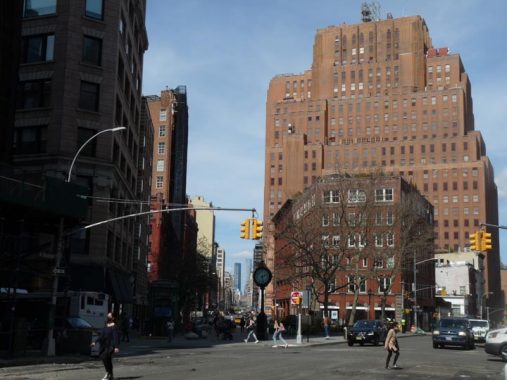
West Broadway, Hudson and Chambers Streets. Hudson Street diverges from West Broadway here and runs up the west side of Manhattan all the way to West 14th Street at 9th Avenue. However, you can’t drive all the way to the end, as its one-way orientation points north at 8th Avenue at Abingdon Square.
The triangle formed by the three streets is called James Bogardus Triangle. He is the architect who brought cast-iron front buildings to Tribeca and SoHo in the mid-1800s, and thankfully, may of them remain in place.
The building in the foreground, 16 Hudson at Reade, is a grand old brick Neo-Grecian loft building constructed in 1873. It’s been used for grocery warehousing, light manufacturing, and was finally converted to residential. In the rear is the massive #60 Hudson Street, originally the Western Union Building (1928-1930), an Art Deco masterpiece designed by architect Ralph Walker. At one time all of WU’s telegraph operations were located there.
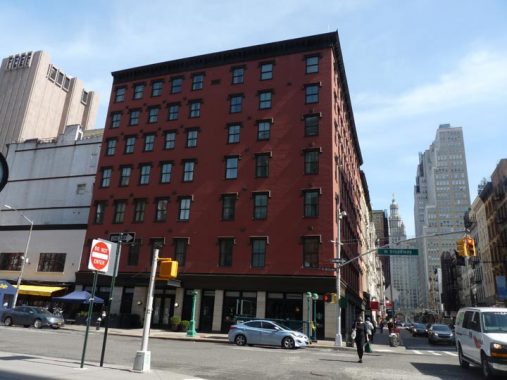
New York City’s oldest extant hotel building is hiding in plain sight at the busy corner of West Broadway and Chambers in Tribeca. Recently redubbed as a luxury hotel called The Frederick, the Cosmopolitan Hotel’s pedigree goes all the way back to 1845.
That year, a tobacco merchant named James Boorman built a boarding house at the corner. At the time, Chambers Street was a tree-lined route on which personnel working for City Hall and neighboring endeavors lived. The building then at #122 Chambers was said to have been the first house in NYC with a bathtub. As commercial businesses started to fill in the area, Boorman built his new boarding house so travelers doing business at these places had a way to spend the night. What became the Cosmopolitan was originally 4 floors with New Orleans-style ironwork at the second floor. It wasn’t originally called the Cosmopolitan but initially was known as the Frederick and then the Girard House.
In the 1860s it gained two floors and changed its name to the Cosmopolitan (the seventh floor was added in 1989). It remained a respectable place for decades but by the 1960s, it was single-room occupancy called the Bond, just above homeless-shelter status. Its fortunes went on the upswing again as Tribeca became a hip neighborhood, and recently, new ownership has renovated it into a luxury place called the Frederick once again.
The late great Christopher Grey discussed the building in the NY Times in 2009, and added some vintage postcard views.
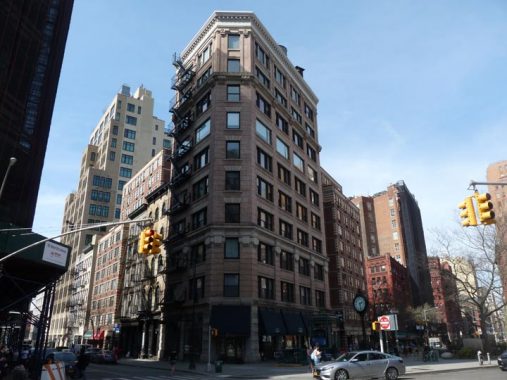
Opposite the “Cosmo” on the NW corner of Hudson and Chambers is #19 Hudson, a Romanesque Revival warehouse designed by George Martin Huss and built in 1885. The fact it was built as a warehouse is notable as back then, even utilitarian buildings like this had interesting style. The angled edge at the corner is known by architects as a chamfer.
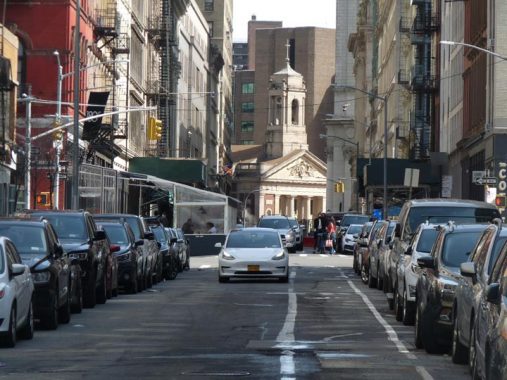
You can record all kinds of interesting things by pointing the camera. I’m not only interested in “street scenes,” I’m interested in “streetscapes.” Way down at the east end of Reade Street is the distinctive steeple of St. Andrew’s Church.
St. Andrew’s Church was consecrated on Duane Street east of Centre in 1939, replacing an earlier church named Carroll Hall built in 1842.
Just before the Civil War when the City Hall area became the center of the printing and newspaper business, the church received special dispensation to say a “printer’s Mass” at 2:30AM for the night shift of newspapermen and printers. It later became the first parish church to offer a noon Mass for the growing number of businessmen in the area. The Latin phrase on the frieze, Beati qui ambulant in lege domini, means ‘Blessed are those who walk in the law of the Lord.’ —Gerard Wolfe
I’m well aware of printers’ night shifts, having worked an overnight shift at a financial printer as late as 2018.
Patrick Cardinal Hayes (November 20, 1867 – September 4, 1938) was from the Five Points area and attended this church as a youth. He was an American Cardinal of the Roman Catholic Church. He served as Archbishop of New York from 1919 until his death, and was elevated to the cardinalate in 1924. A boys’ high school in the south Bronx bears his name. City Hall Place, which runs from Duane Street to Pearl Street, was renamed for him.
Why can the church be seen from Reade Street? Duane Street curves southeast at Centre, as it followed a stream that issued from Collect Pond.
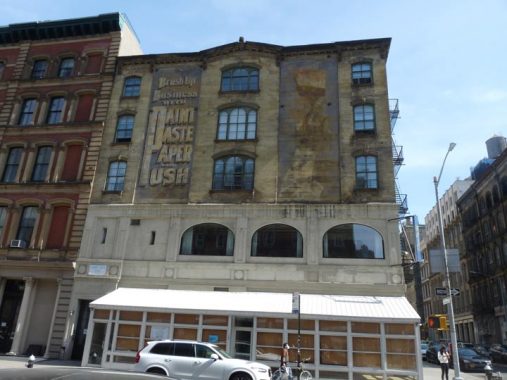
#109-113 West Broadway, a.k.a. #112 Reade, is an Italianate loft building constructed in 1860. It has some castiron elements along with masonry construction. The building is of course notable for one of the more enduring “faded ads” in the city, so good in fact that it looks like it may have been painted just recently for a period TV show like “Boardwalk Empire” or “The Knick” but it’s a genuine ad painted most likely by 1890 or so. “Brush Up Business With Paint Paste Paper Push” probably refers to an advertising “push.”
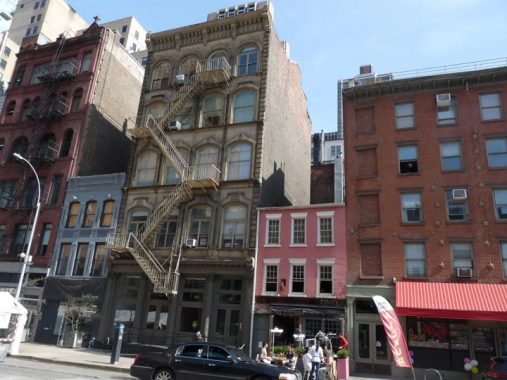
Lots to take in here on West Broadway between Duane and Thomas but I was fascinated with the tiny building with the pink paint job, #135 West Broadway. In fact it has a restaurant on the ground floor called Tiny’s. It’s a survivor of the early 19th Century, built in 1810 by Richard Kidney. It has hosted cobblers, cigar makers, plumbing and heating supplies in 1940, iron works, and a scale (weighing machine) repair business.
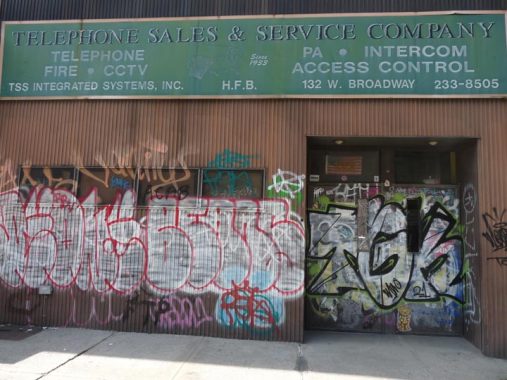
Across the street at #132, I think we can now consider this a ghost business sign for landline phone service in the age of cellphones and digital. The company originated in 1933.
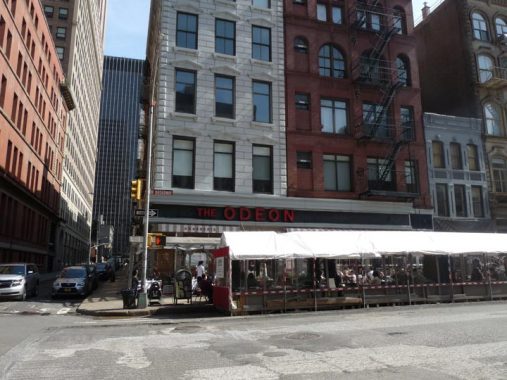
The Odeon (former Towers Cafeteria), at West Broadway and Thomas Street. The restaurant was made famous by Jay McInerney in his 1984 novel Bright Lights, Big City. I’ve never been in. Early on in Forgotten NY history, I almost had the opportunity to get into the Odeon as a woman who liked the site was talking about having lunch with me there but alas, it didn’t transpire.
The 2020 Covid outdoor dining shed detracts from the classic neon sign, which closely resembles an earlier incarnation as the Towers Cafeteria in 1940.
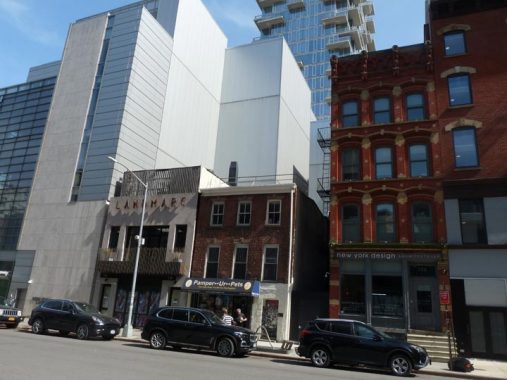
The supertall 56 Leonard Street, which looks like a big stack of Jenga blocks, lurks in the background, with two mid-1800s buildings, #175 and #177 West Broadway, and #185, New York Law School. The law school was instituted in 1890, and this new campus was constructed in 2010.

Varick Street angles northwest from West Broadway at Leonard. I have only been in the Square Diner at Varick and Leonard once, after a tour a few years ago. It’s actually triangle-shaped to fit in its tiny plot. Sadly, it closed during the Covid Pandemic but a sign on the door says it is hopeful of reopening in the spring of 2021.
The booths are tiny but the food is good. I liked my Square experience so much, I devoted an entire FNY page to it.
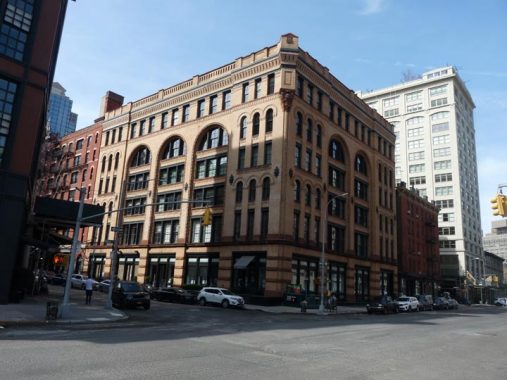
#1-9 Varick Street, corner of Franklin, a massive 6-story Romanesque Revival building, was constructed in 1888 and originally served as… a wrapping paper factory for D.S. Walton & Company. Today residential, it was also been home to food importers, metal manufacturers and marine supplies storage, and has been used to warehouse compressed gas.
I have a fascination with the Franklin Street subway station, a local stop on the #1. It opened in July 1918 and has some interesting wall tiling not seen elsewhere on the line, likely from renovations done in the 1990s. The unique location of the entrance in the triangle formed by Franklin and Varick Streets and West Broadway allowed architects to get creative with a wide glass and metal “headhouse.”
Aretha Franklin (1942-2018), Atlantic Records’ “Queen of Soul,” racked up hits in four decades, with her signature song “Respect.” Upon her death the MTA Sign Shop installed a tribute to it using their general sign design, though I’m surprised they didn’t employ metal signs which would be easier to eventually remove than the pasted ones they did use.
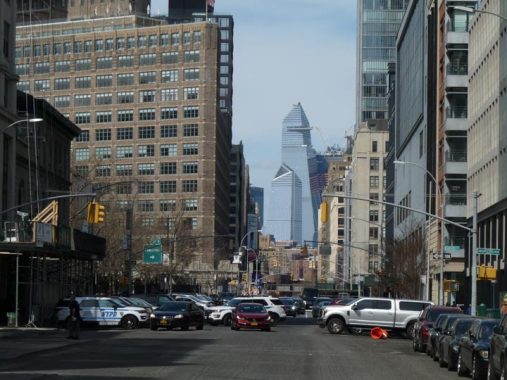
A “streetscape” discussed earlier on Reade Street revealed St. Andrew’s Church; here on Varick Street, another one reveals the dystopian Hudson Yards, with its expensive observation deck.
Check out the ForgottenBook, take a look at the gift shop, and as always, “comment…as you see fit.”
I earn a small payment when you click on any ad on the site.
3/28/21


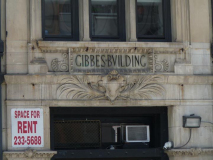
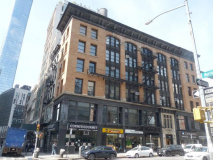
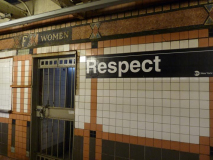
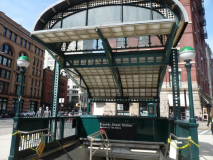
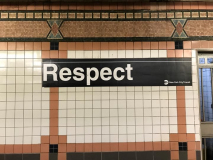
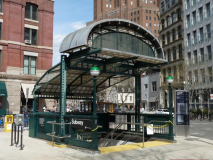
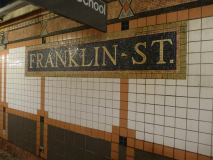
6 comments
Loved West Broadway. Had many great times in the late 80s to early 90s when I worked on Worth Street. #112 West Broadway was home to the Delphi Restaurant that had the first and second floors. Had many lunches and dinner dates there. It lasted until about 2007 or so. Glad to see The Odeon is still there. If memory serves, the Square Diner was another good restaurant named Denise’s back then.
North of Canal is Kenn’s Broome Street Bar (think it was called Kenn and Bob’s back then) and the Cupping Room were faves and believe both still there today.
My guess as to why the “Respect” is a stick on sign and not a metal plate sign is so the tribute remains. If the sign was standard metal it would have vanished and might never be replaced.
Cardinal Hayes was an alumni of my high school.And thats why the school mascot
is called The Cardinals-get it?
You can even see the Cardinals gym in the movie The Basketball Diaries starring
Leonardo De Caprianio
Maybe this is just me saying this, but I feel that it’s sort of strange of many of the other streets in Manhattan that have Broadway in it don’t seem to cross Broadway itself.
The signage on 113 West Broadway doesn’t seem to be evident in the 1940s (via municipal archives.) Might it have been white-washed over and later
revealed? Or newer than thought?
https://1940s.nyc/map/photo/nynyma_rec0040_1_00146_0011#16.81/40.715969/-74.007073
Interesting article. I worked for a time at 388 Greenwich Street and am familiar with many of the sights you listed. You are correct about the Franklin Street subway station. It was actually refurbished in the late 1980’s
when Shearson Lehman Brothers made the trek from 17 Battery Place to Soho. The company was responsible for the improvements to the station as many of their employees would be using it. This area was quite a
different place back then, it has really prospered in the last 30+ years. Good job, thanks for the great photos too.